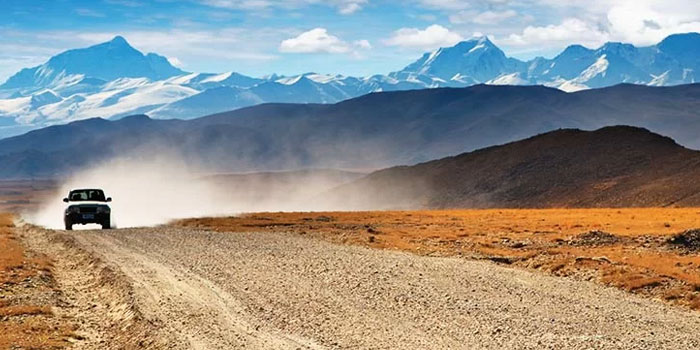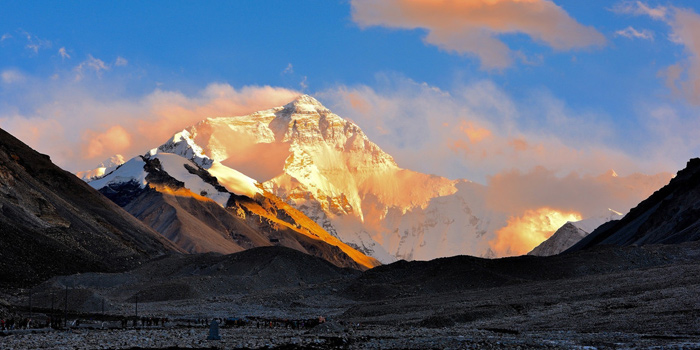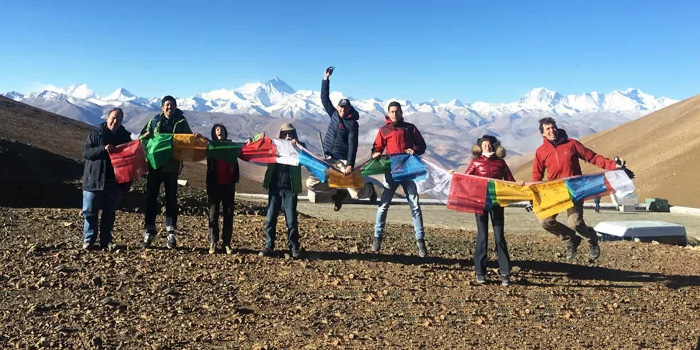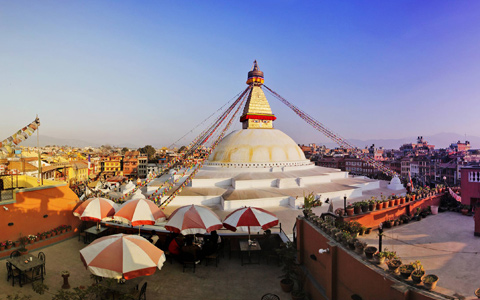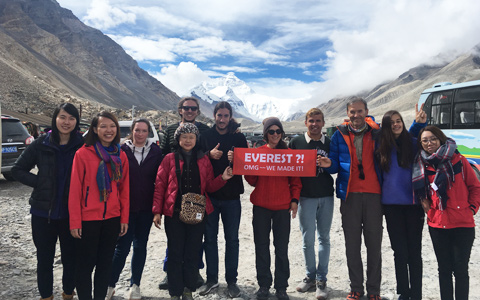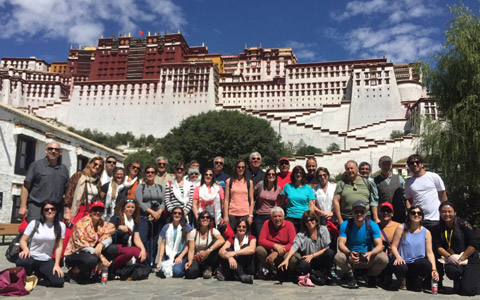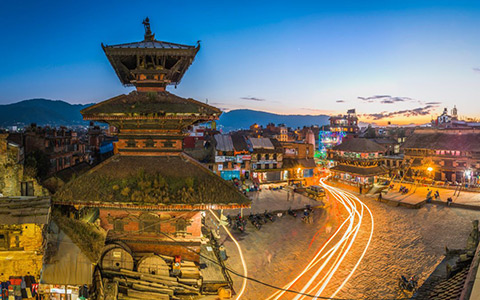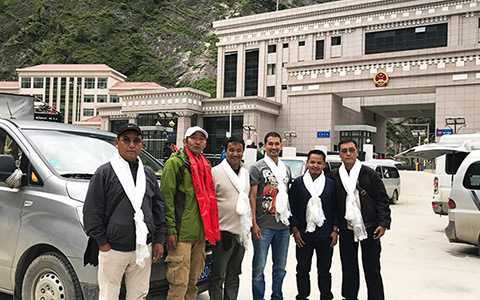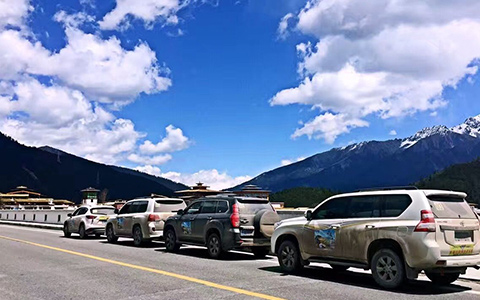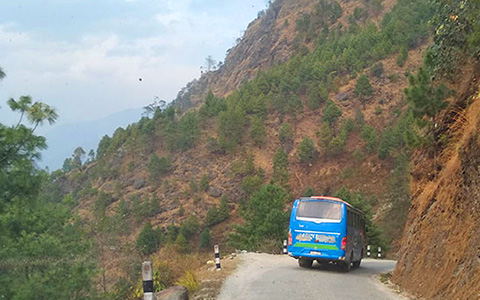China Tibet VS Nepal: Which One is Better for Tourists?
The two Himalayan regions of Tibet and Nepal are increasingly popular travel destinations. While they are deeply connected in many ways, Tibet and Nepal offer distinct experiences for travelers. Culture, history, and geography are all worth considering when trying to decide which place to visit, so here’s an overview to help you decide, Tibet vs. Nepal, which one is better for tourists?
 Basic Information about China Tibet VS Nepal
Basic Information about China Tibet VS Nepal
 Tibet VS Nepal in Tourism: Both Have Well-Developed Tourism Industries
Tibet VS Nepal in Tourism: Both Have Well-Developed Tourism Industries
 Tibet VS Nepal in Tour Length: Both Offer Various Options from Short Trips to Long Vacations
Tibet VS Nepal in Tour Length: Both Offer Various Options from Short Trips to Long Vacations
 Tibet VS Nepal in Tour Experience: Different Travel Highlights
Tibet VS Nepal in Tour Experience: Different Travel Highlights
 Tibet VS Nepal in Everest Base Camp: The One in Tibet is More Accessible
Tibet VS Nepal in Everest Base Camp: The One in Tibet is More Accessible
 Tibet VS Nepal in Tourist Cost: The Cost in Tibet Can be Higher but Affordable
Tibet VS Nepal in Tourist Cost: The Cost in Tibet Can be Higher but Affordable
 Tibet VS Nepal in Best Season to Visit: Different Climate Features
Tibet VS Nepal in Best Season to Visit: Different Climate Features
 Tibet VS Nepal in Local Transportation: Tourist Vehicle is the Major Option in Tibet
Tibet VS Nepal in Local Transportation: Tourist Vehicle is the Major Option in Tibet
 Tibet VS Nepal in Local Food: Both Offer Distinct Cuisine
Tibet VS Nepal in Local Food: Both Offer Distinct Cuisine
 Tibet VS Nepal in Safety: Both are Safe to Visit
Tibet VS Nepal in Safety: Both are Safe to Visit
 Tibet VS Nepal in Accessibility: Both are Easy to Reach
Tibet VS Nepal in Accessibility: Both are Easy to Reach
 Tibet VS Nepal in Travel Documents: Easy to Obtain
Tibet VS Nepal in Travel Documents: Easy to Obtain
Basic Information about China Tibet VS Nepal
Sharing a high-altitude border several hundred kilometers long, Nepal and Tibet nevertheless have distinct geographies. Tibet, an autonomous region of the southwest of China, is often referred to as the ‘Roof of the World’. Sitting on top of the high-altitude Tibetan Plateau, the land of Tibet is characterized by soaring mountains and vast open spaces. That high altitude brings an often harsh climate, and Tibet experiences cold winters and cool summers. Nepal has much more diverse weather. The land stretches from lowlands in the south with a tropical climate, to the towering Himalayas along the border with Tibet.
 Geographical Location between Tibet and Nepal
Geographical Location between Tibet and Nepal
In Tibet, culture is dominantly influenced by Tibetan Buddhism. The region is covered with iconic monasteries and temples, and exciting and solemn festivals take place throughout the year. Culture in Nepal is a blend of Hinduism and Buddhism with influences from the surrounding countries.
Tibet VS Nepal in Tourism: Both Have Well-Developed Tourism Industries
Both Tibet and Nepal have well-developed tourism industries. In Tibet, Lhasa has the best accommodation options with a full range of hotels from budget hostels to 5-star luxury resorts. Outside of Lhasa options are more limited, but accommodations are always warm, comfortable, and clean. In Nepal, popular tourist areas like Kathmandu and Pokhara have diverse hotel choices.
Knowledgeable and friendly guides are widely available in both places to take visitors to well-known and more remote locations. Similarly, getting around isn’t difficult. There are networks of public buses and private cars can be hired. Tibet also has a high-altitude train connecting it to the rest of China.
Tibet VS Nepal in Tour Length: Both Offer Various Options from Short Trips to Long Vacations
There is a wide range of tour options available to fit any schedule. A four-day tour of Nepal is a great way to get an impression of the country, while longer tours allow for deeper exploration. Over 7 days, you can explore Kathmandu and Pokhara, experiencing the cities in depth and seeing some of the surrounding natural attractions such as Mahadev Cave, Seti River Gorge, and David’s Fall. With even more time, you can see the best of Nepal, adding visits to Nagarkot, Chitwan National Park, and hiking in Ghandrung.
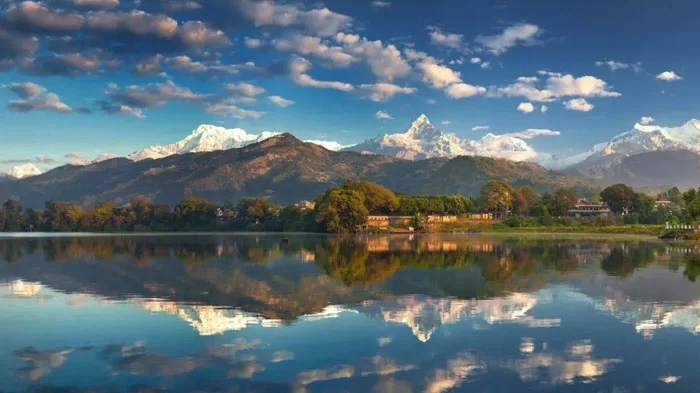 One can explore Pokhara in addition to Kathmandu in a 7-day Nepal tour.
One can explore Pokhara in addition to Kathmandu in a 7-day Nepal tour.
For a Tibet tour itinerary, four days in Lhasa are perfect for immersing yourself in the local culture and exploring the city's sites. If you have an extra day, consider adding an excursion to the beautiful holy lake Yamdrok. With 8 days available, you can embark on a once-in-a-lifetime trip to Everest Base Camp. Along the way, you'll visit Shigatse, the second-largest city in Tibet, pass through the impressive Gawula Pass, and explore Tashilhunpo Monastery, the home of the Panchen Lama. If you have 15 days at your disposal, you can fulfill a pilgrim's fantasy by traveling all the way to the sacred Mount Kailash and the holy Lake Manasarovar.
Tibet VS Nepal in Tour Experience: Different Travel Highlights
The experience of visiting Tibet is a spiritual one. With its high-altitude landscape of vast plateaus and towering mountains, nature itself is an intense presence there. Dotting the landscape are iconic monasteries like the Potala Palace in Lhasa and the Jokhang Temple, places that are not only religious centers but also showcase Tibetan art and architecture. Visitors are also welcome to take part in traditional festivals like the Shoton Festival, and the Saga Dawa Festival.
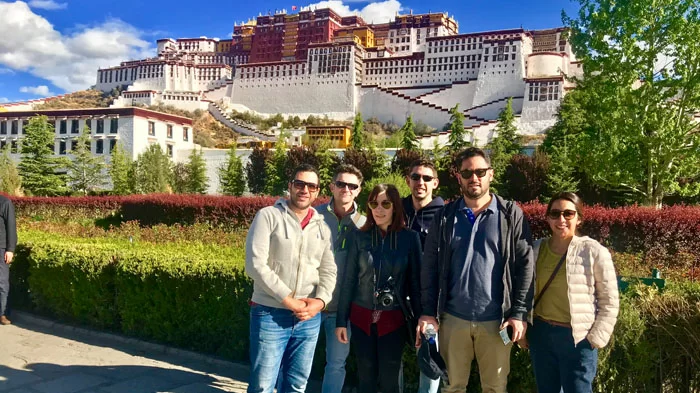 Potala Palace is the must-see in Tibet.
Potala Palace is the must-see in Tibet.
Nepal is a country with a rich cultural heritage on display in places like the UNESCO World Heritage Sites in the Kathmandu Valley, including historic temples, stupas, and palaces. Vibrant cities like Kathmandu and Pokhara offer a blend of ancient and modern and are bustling hubs for tourists with markets, restaurants, and cultural attractions. Nepal is also home to some of the world's most renowned trekking routes, such as the Everest Base Camp trek and the Annapurna Circuit. Trekkers can experience diverse landscapes, from terraced fields to alpine environments.
Tibet VS Nepal in Everest Base Camp: The One in Tibet is More Accessible
Everest Base Camp on the Tibetan side is more accessible to travelers and offers close views of Everest. Instead of trekking the long and challenging trail, one can take an overland trip to the Tibetan EBC from Lhasa, which is a relatively smoother and more direct option. The road to the Tibetan EBC from Lhasa is well-constructed, allowing vehicles to reach higher altitudes. This journey also aids in acclimatization before reaching the stunning views of the mountain and its surrounding landscapes.
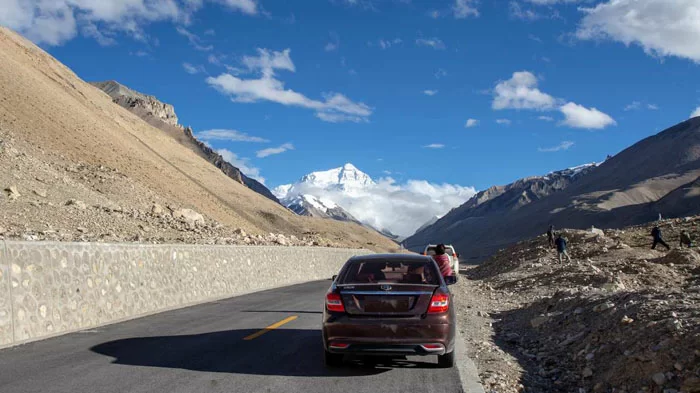 Travel to Tibet Everest Base Camp by overland
Travel to Tibet Everest Base Camp by overland
The trek to the Everest Base Camp in Nepal is an iconic adventure that takes you through picturesque Sherpa villages, rhododendron forests, and high-altitude landscapes. The trek is challenging but immensely rewarding, offering breathtaking views of the Himalayan range, including Everest, Lhotse, Nuptse, and the famous Khumbu Glacier. Nepal offers several trekking routes to Everest Base Camp, each with its unique features. The classic route starts with a flight to Lukla and then proceeds through Namche Bazaar, Gorak Shep, and ultimately to EBC.
Tibet VS Nepal in Tourist Cost: The Cost in Tibet Can be Higher but Affordable
Nepal is generally a budget-friendly destination for tourists. It offers a wide range of accommodation and dining options to suit various budgets. Guesthouses, street food, and local eateries, in particular, are ideal for travelers who want to keep a close eye on their expenses. Public transportation is highly accessible, and even taxis are available at reasonable rates.
Costs in Tibet are relatively higher. Permit fees for tourists can add some costs, and while budget accommodations are available, the prices are still higher than in Nepal. To cut down prices, traveling in the low season can be a good option. While temperatures are cold in the middle of winter, accommodation and flight fares can be greatly lower. Joining small group tours is another good option for saving money as transportation and tour guide costs can be shared.
Tibet VS Nepal in Best Season to Visit: Different Climate Features
Tibet’s high-altitude climate makes choosing the best time to go very important. Temperatures in the winter months can be very cold and parts of the region can be less accessible due to snow. April to October is considered the best time to visit Tibet. Temperatures are warmer and more comfortable and road and mountain passes are more likely to be open. This season aligns with several vibrant Tibetan festivals, providing visitors with the opportunity to witness and participate in cultural celebrations.
The best time to visit Nepal is during the dry season, which typically spans from October to early April. The peak tourist season is from October to November when the weather is clear, and temperatures are moderate. The dry season is particularly popular for trekking in regions like the Annapurna and Everest, where the weather makes for clear mountain views and stable trekking conditions.
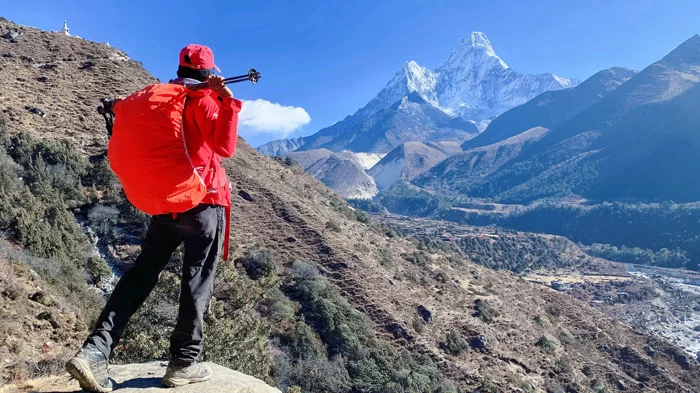 The best time to visit Nepal is from October to early April.
The best time to visit Nepal is from October to early April.
Tibet VS Nepal in Local Transportation: Tourist Vehicle is the Major Option in Tibet
For getting around in Tibet, many tourists opt for organized tours that include transportation, permits, and guides, etc. These tours often provide comfortable vehicles, ensuring a hassle-free experience. Public transportation options in Tibet are more limited compared to some other destinations, but private vehicles are readily available for hire.
Nepal offers a variety of local transportation options catering to different preferences and budgets. Public buses and microbuses connect major cities and towns and are affordable options for budget-conscious travelers. Taxis are available in urban areas, and they are commonly used for short distances, and private cars can be hired for greater convenience.
Tibet VS Nepal in Local Food: Both Offer Distinct Cuisine
The distinct cuisines of both regions are a delight to experience. In Tibet, food is heavily influenced by the region's high-altitude environment. Traditional meals include barley, yak meat, and dairy products, with dishes like tsampa (roasted barley flour), momos (dumplings), and thukpa (noodle soup) being popular. Tibetan butter tea, made with yak butter, tea leaves, and salt, is a ubiquitous beverage and a vital source of warmth in the cold climate.
 Tibetan butter tea and fried potatoes are popular Tibetan foods.
Tibetan butter tea and fried potatoes are popular Tibetan foods.
Nepalese cuisine is more diverse and influenced by the country's varying elevations and ethnic groups. Dal Bhat, a lentil soup with rice, is a staple, accompanied by a variety of side dishes like pickles, curries, and vegetables. Momos are also widely enjoyed in Nepal, showcasing a blend of flavors and often served with dipping sauces. The Thakali cuisine of the Annapurna region and the Newari cuisine of the Kathmandu Valley provide additional culinary richness.
Tibet VS Nepal in Safety: Both are Safe to Visit
Both Tibet and Nepal are safe places for tourists. Crime rates are very low, particularly in Tibet, and violent crime against tourists is almost unheard of. Some petty theft and pickpocketing can occasionally happen in Nepal, so it is best to take care of your belongings when in crowded areas.
Tourists planning to do trekking should be careful to prepare in advance and follow all guidelines to help avoid accidents and injuries. In Tibet, the primary concern is altitude sickness due to the high-altitude environment. Travelers are advised to consult with a doctor before traveling and acclimatize properly, stay hydrated, and be aware of the symptoms of altitude sickness.
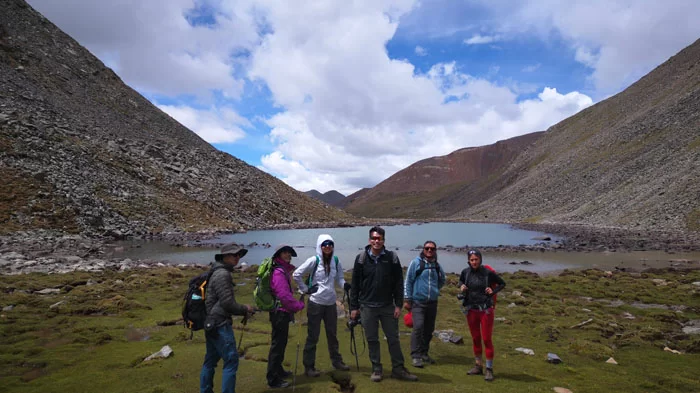 Be aware of altitude sickness when trekking in Tibet.
Be aware of altitude sickness when trekking in Tibet.
Tibet VS Nepal in Accessibility: Both are Easy to Reach
Getting to Nepal is easy. Tribhuvan International Airport in Kathmandu is accessible by direct flights from major international cities. Overland entry is also possible through various border checkpoints with neighboring countries, including India.
Tibet can be accessed from mainland China by both train and flight. The Qinghai-Tibet Railway connects major Chinese cities to Lhasa, providing a scenic and high-altitude train journey. Several Chinese cities offer direct flights to Lhasa Gonggar Airport, making air travel another accessible option. Travelers can also enter Tibet from Nepal. The main border crossing is Gyirong border along the Friendship Highway, and there are flights from Kathmandu to Lhasa.
Tibet VS Nepal in Travel Documents: Easy to Obtain
Most foreign nationals require a visa to enter Nepal. Visas can be obtained on arrival at Tribhuvan International Airport in Kathmandu or land border crossings. The process is straightforward, and multiple entry options are available. For some specific regions, such as the Annapurna and Everest regions, trekkers need to obtain trekking permits. These permits are usually obtained in Kathmandu or at entry points to trekking areas.
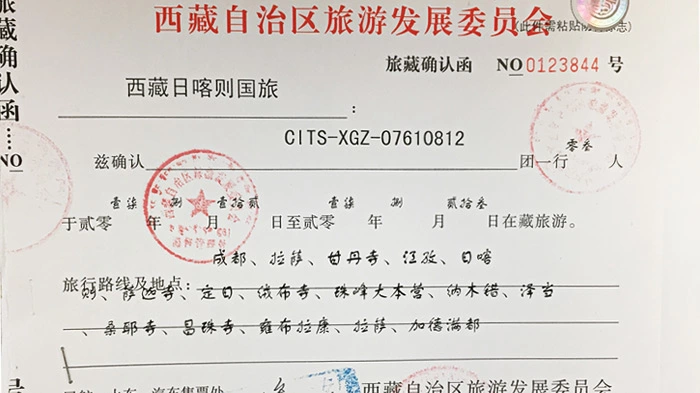 A Sample of Tibet Travel Permit
A Sample of Tibet Travel Permit
In addition to a Chinese tourist visa, all foreign tourists traveling to Tibet must obtain a Tibet Travel Permit before entering. This permit is issued by the Tibet Tourism Bureau and is arranged through a registered tour operator. In addition to the Tibet Travel Permit, there may be a need for additional permits for certain remote and restricted areas. For example, permits such as the Alien's Travel Permit and Military Permit may be required for travel to specific regions.
Obtaining these permits for visiting Tibet is not difficult, as we can help you to get them in advance as long as you book your Tibet tour with us.
The Best Way to Explore Tibet and Nepal Together
Visiting Tibet and Nepal together on a combined trip is not only a way to experience the sweeping majesty of the larger Himalayan region but also makes the logistics much simpler. With direct flights available between Kathmandu and Lhasa, plus land border crossing points, transferring between the two regions is convenient. In addition, much of the preparation needed for the high-altitude regions will be the same for both Tibet and Nepal.
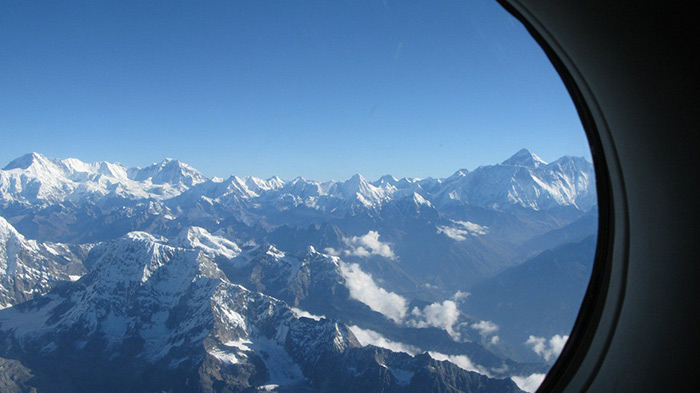 One can see Mount Everest on the flight from Kathmandu to Lhasa.
One can see Mount Everest on the flight from Kathmandu to Lhasa.
Deeply connected in geography, culture, and history, the people in these regions have nevertheless developed distinct cultures in the shadows of the Himalayas while adapting to the unique climate and landscape. Visiting Tibet and Nepal together is a way to see how this has given rise to two unique cultures.
Conclusion
With so many interesting and unique experiences available, choosing between Tibet and Nepal is not an easy task. Nepal's diverse environment and vibrant cities will enchant you with their exotic culture, while Tibet's stark terrain is unlike anything you'll find elsewhere in the world. To simplify your decision, consider taking a combined tour of both regions, and please feel free to contact us to plan your Tibet and Nepal tour.
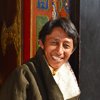
The Lhasa-born prodigy used to study business overseas, and got his Bachelor of Business in Nepal and India before moving back to his homeland. With pure passion for life and unlimited love for Tibet, Kunga started his guide career as early as 1997.
Responsible, considerate, and humorous, he devoted his entire life to guiding and serving international tourists traveling in Tibet. As a legendary Tibetan travel guru with 20-year pro guide experience. Currently, he is working in Tibet Vista as the Tour Operating Director. Whenever our clients run into trouble, he is your first call and will offer prompt support.
Related Articles & Posts
Most Popular Tibet Tour Packages
-
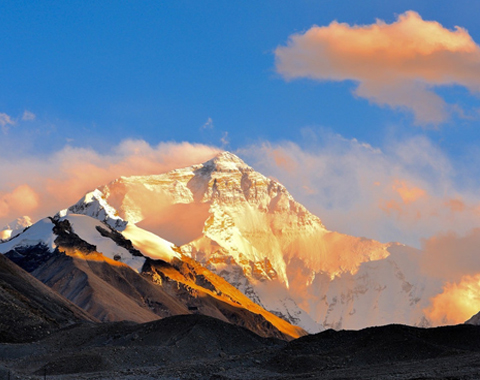
Lhasa - Gyantse - Shigatse - Everest Base Camp - Shigatse - Lhasa
USD939
View Details -
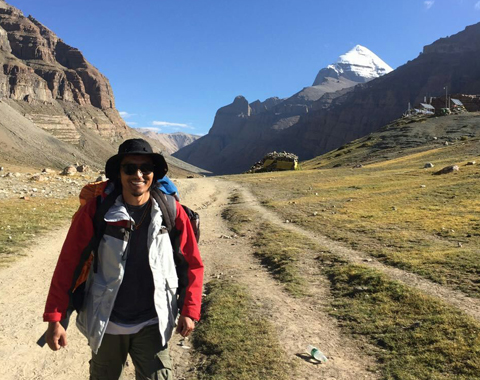
Lhasa - Gyantse - Shigatse - E.B.C - Saga - Kailash Trek - Darchen - Lake Manasarovar - Saga - Gyirong - Tingri - Lhasa
USD2059
View Details -
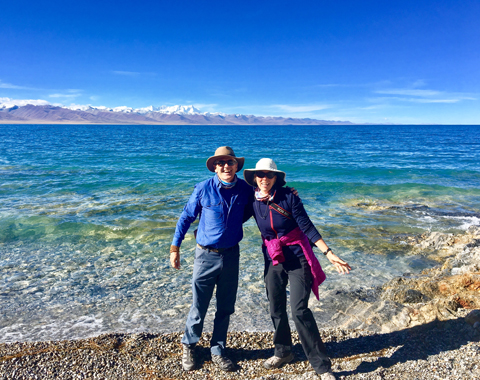
10 Days Lhasa to Everest Base Camp and Namtso Lake Small Group Tour
Lhasa - Gyantse - Shigatse - EBC - Shigatse - Lhasa - Namtso Lake - Damxung - Lhasa
USD1289
View Details -
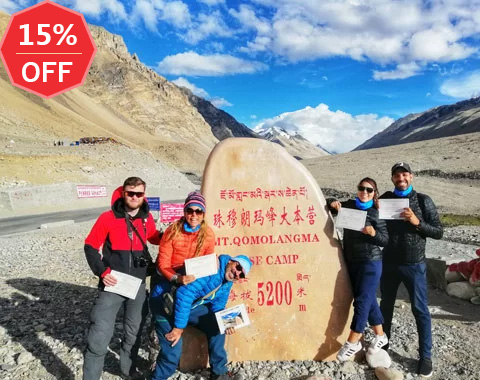
8 Days Driving Across Himalaya Overland Adventure from Kathmandu to Lhasa
Kathmandu - Gyirong - Everest Base Camp - Tingri - Shigatse - Gyantse - Lhasa
USD1069
View Details -
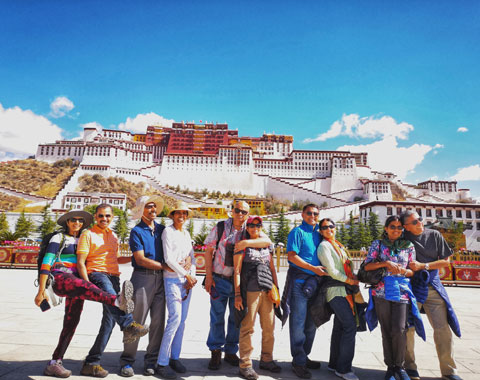
4 Days Lhasa Impression Small Group Tour: Explore the Heart of Tibet and Mingle with the Locals
Lhasa
USD509
View Details -
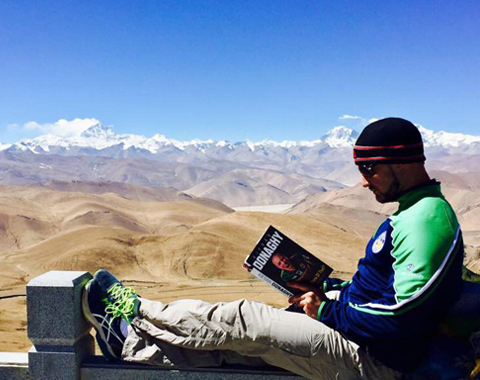
Lhasa - Gyantse - Shigatse - Everest Base Camp - Gyirong - Kathmandu
USD979
View Details -
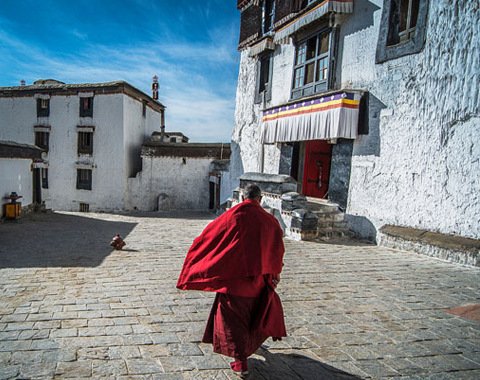
Lhasa - Gyantse - Shigatse- Lhasa
USD799
View Details -
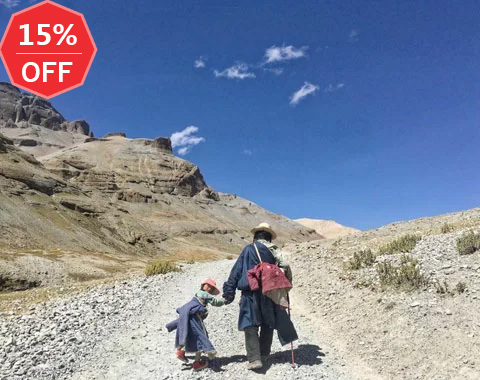
13 Day Lhasa, Mt. Everest, Mt. Kailash, Lake Manasarovar and Kathmandu Adventure Tour
Lhasa - Gyantse - Shigatse - EBC - Saga - Darchen - Kailash Trek - Darchen - Saga - Gyirong - Kathmandu
USD2059
View Details
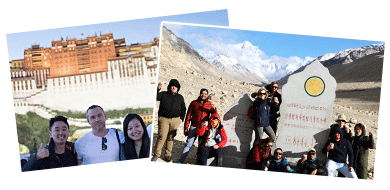

.jpg)



